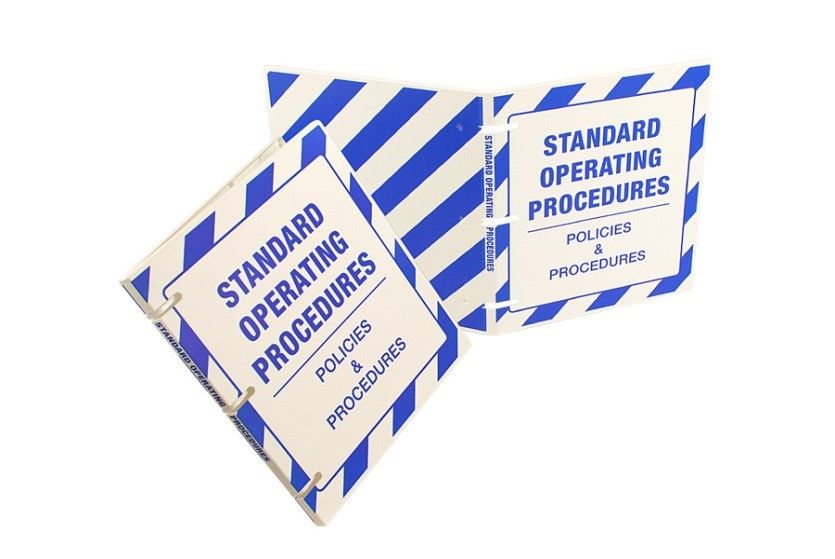3 Critical Functions of Business
Every successful business only do these three things:
Function Description Your%Time Ideal%Time Model Type Revenue/Expense
Marketing/Sales Get Business _________ 65% Marketing Model Revenue
Operations Do & Keep Business _________ 25% Business Model Expense
Admin Keep Score _________ 10% Revenue Model Expense
• Get Business: There are only 3 ways to increase your sales:
↑ Number of Clients
↑ Revenue Per Client Transaction
↑ Frequency Client Buys From You
• Do & Keep Business: Operations, delivering your products & services, new product development, keeping clients
• Keep Score: Admin, keeping track w/ metrics & KPIs (Key Performance Indicators)
 Too Much Time on the Busyness of Business
Too Much Time on the Busyness of Business
If you’re like most small businesses, you’re spending too much time in operations/doing business and admin/keeping score (but not the metrics and KPIs!) than you are in marketing & sales activities.
Therefore, the goal is to focus on maximizing and freeing up time for the most important functional area, which is:
Marketing/Sales = Get Business = Revenue Generating Activities
Goal: ↑ Revenue Generating Activities ↓ Expense Generating Activities
So while 65% of your time should be focused on revenue-generating activities, the other areas need proper attention too. So, in order to do that, at some point you’ll need team members to do some or much of the operations and admin activities for you. As much as we need and want help, hiring others can get expensive. In fact, labor is the largest expense category in nearly every business. In order to maximize your and other team members’ productivity, it’s best if you have systems/processes/SOP's to follow. Otherwise, you run the risk of the job not getting done, things slipping through the cracks or not measuring up to your standards.
Therefore, Lack of Processes Leads To:↓ Process = ↑ Cost + ↓ Productivity + ↓ Profit
This is exactly the opposite of what’s necessary to run a successful, sustainable, scalable, salable, profitable business!
But not all processes are the same...
2 Main Goals with Creating Processes
Goal #1:
↑ Written Step-By-Step Processes
↓ Stored-In-Your-Head Processes
Goal #2:
↑ Automated Processes
↑ Delegated Processes
↓ Manual Processes
Initially, your goal should be to create written processes for revenue-generating activities. Once they are created, then you can either automate or delegate them. Automated systems free up valuable time, money, energy and resources. You set them up once, and then they run by themselves. Automated systems won’t call in sick, forget or not be in the mood to do your critical functions in key areas.
As much as possible, you then want to delegate other tasks and processes to your team. This requires hiring, training and managing your team and holding them accountable with written SOP's (Standard Operating Procedures). SOP’s are the proven, step by step process to follow to produce a desired result or outcome. They are the standards or “best practices” in order to most efficiently and effectively get tasks or projects done successfully.
When to Create Processes?
Start thinking that everything you do in your business on a regular basis that takes over 10-15 mins of time can be turned into a written procedure or SOP. If it is a process you need to keep and do yourself, then you follow it. Otherwise, it can be delegated to someone else.
The good news is that when you have written SOP's, you can even hire lower $/hr team members, therefore saving you money and increasing profit. That’s because a written job/task/process is much easier to follow and takes less skill than memorizing or figuring it out. Written processes also take less time to train. On average, it takes 6 months for a team member to become fully productive in a business. With SOP's, that time is reduced to 6-8 weeks, saving time, money and productivity!
Who Writes the SOP's?
The person who writes the SOP is the person who actually performs the task as part of their job description. The manager or director does not write the SOP for the employee. It is only in rare cases that the manager would do this for a newly created position. In most cases, the newly created position pulls responsibilities from other positions that have been outgrown and need additional support. In this case, those employees currently doing those roles in their limited function should still write the basis of the SOP to transfer to the new role. The person hired in the new role can then modify and expand the SOP to its current functionality.

6 Steps to Create SOP's
Think of creating an SOP like creating and following a step by step recipe, like baking a cake. Create SOP's for your revenue generating activities first, including how you “onboard” clients for a great client experience.
Step 1: Organize: Do a time study for 1-2 weeks to see how/where you spent your time on a daily basis. To prepare for this step, use a journal or note pad that you visibly keep with you for 1-2 weeks. Do your best to be an “observer” of yourself to notice and be aware of what you are doing with your time while you are doing your normal activities during the 1-2 weeks of the time study's.
Step 2: Prioritize: Identify 10-20 most critical tasks. For yourself and every person on your team, it is necessary to identify the 10-20 most critical tasks that each job function/role performs. The idea behind this is that if suddenly the person who currently does that job were no longer there, how could the company fill that role as quickly as possible and continue the smooth functioning of the company.
Step 3: Write the SOP: Write the draft SOP in narrative and bullet format. This should include the step by step exact method of doing a particular task in detail. The task should be documented in the SOP such that someone could successfully complete the task who knew virtually nothing about your job and how to do it. Include sample documents, forms, examples, etc. as references. If the task is computer related, it is best to include screen shots. Also, for computer related tasks, be sure to say “hit enter, click _____, etc. The instructions need to be the exact procedure and keystrokes to follow.
Step 4: Validate and Verify the SOP: For non-technical tasks, the SOP in Phase 1 should be given to a person on the team who has either limited or no knowledge of how to do the task. That person should go through the SOP step by step. If that person can successfully complete the task by going through the SOP exactly, then it is a well written and verified SOP.
Step 5: Create Manuals for the SOP's: There should be one SOP manual for each job description. If there is a large team within a department, then each subsection of the department would have their own SOP manual. These manuals are hard copy manuals in binders with tabs indicating what SOP is enclosed for which job description or role. For a binder that contains more than 3-4 job descriptions with their associated (10-20) SOP's, a table of contents with page numbers should be included.
Step 6: Maintain SOP's: It is the responsibility of the individual team member to, at the direction of the leader or manager, update an SOP. An individual team member is not authorized to make changes to an SOP on their own. However, an individual team member is highly encouraged to bring ideas forth that would improve how their job or department could run more effectively. Once approved by the leader or manager, the individual team member may then update the SOP and go through the SOP process above.
SOP Timeline & Accountability
Create a reasonable SOP timeline to create and implement SOP's in your business. It is the leader’s responsibility to get “buy in” and make sure each team member is on track to complete their SOP's within the specified timeline.
Incentives/Rewards: Yes, creating SOP's is a time consuming and tedious process. Virtually no one likes to do SOP's. The more “fun” that can be infused into the process, the better. Therefore, it is advisable to create incentives and rewards for completing this process. It is best for these to be predetermined and communicated to everyone in the company, and for the team members to come up with an incentive/reward that is important to them.
Consequences: Failure to comply with the creation of validated SOP’s may result in an official reprimand in a team members evaluation or HR file. This may result in getting a poor review and smaller or no raise in compensation when their review cycle comes up, being redeployed in the company, or being placed on probation for further review. If you have Independent Contractors in your business, a condition of their contract is that they don’t get paid until they submit a written SOP for their scope of work with their invoice.
Your Next Step
eWomenNetwork members may use their 2 free coaching sessions with Nikkea B. Devida, who is a Premier Success Coach.
Click here to learn more and receive 3 free gifts
Accelerated Results Toolkit™ includes:
• Gift #1: Opportunity for an Accelerated Breakthrough session
• Gift #2: 7-Step Delegation & Accountability System Checklist
• Gift #3: Accelerated Results Tips E-zine

Author, Nikkea Devida
Known as the “SOP Queen," Nikkea B. Devida is a business mentor and coach who is best known for successfully helping executives and entrepreneurs “Profit through Process and Productivity." She helps them organize, prioritize, systematize and optimize their organizations for sustainable productivity and consistent profits by putting high performance systems and strategies into place.
Nikkea is a US Air Force Academy graduate who served as an officer responsible for negotiating and managing nearly $200 million dollars of defense contracts at the age of 22! Since then, Nikkea’s systems, project management and operational skills have transformed both large and small companies. Affectionately referred to as their “Secret Weapon to Become Unstoppable," her clients include Disney, Macmillan Publishing, Peak Potentials, Lisa Sasevich, Chris Howard, Alison Armstrong of PAX and Infusionsoft.











